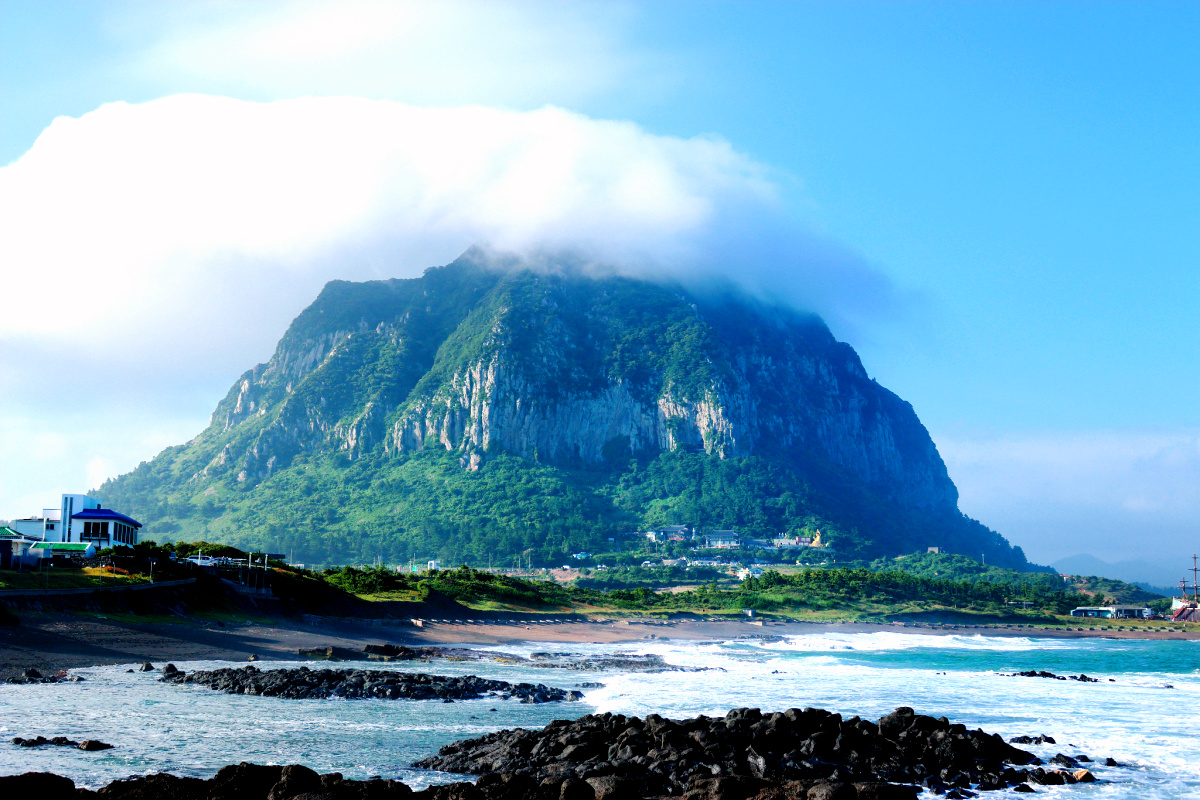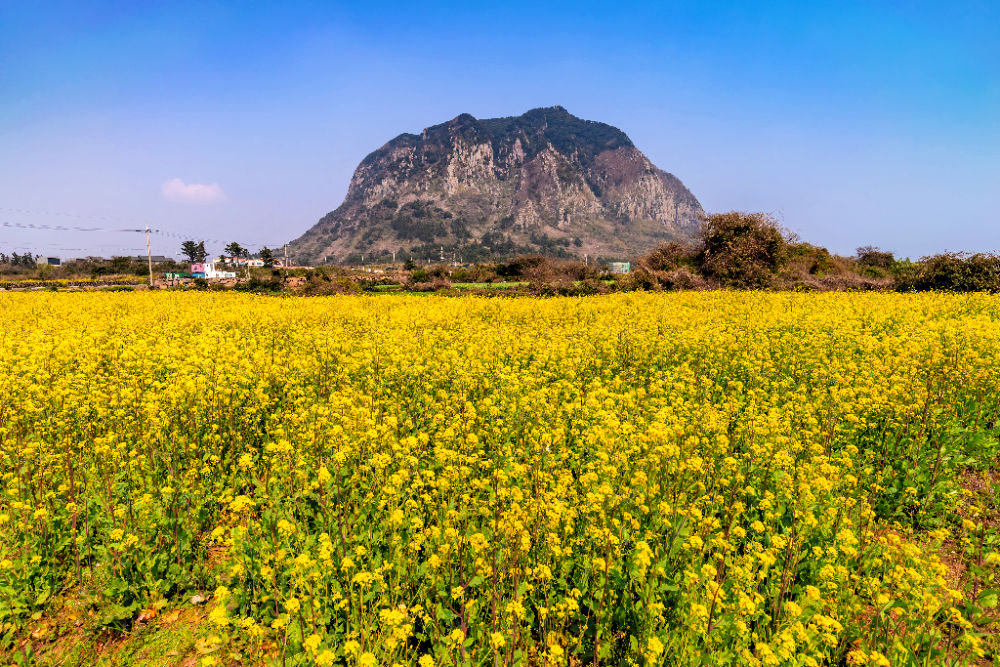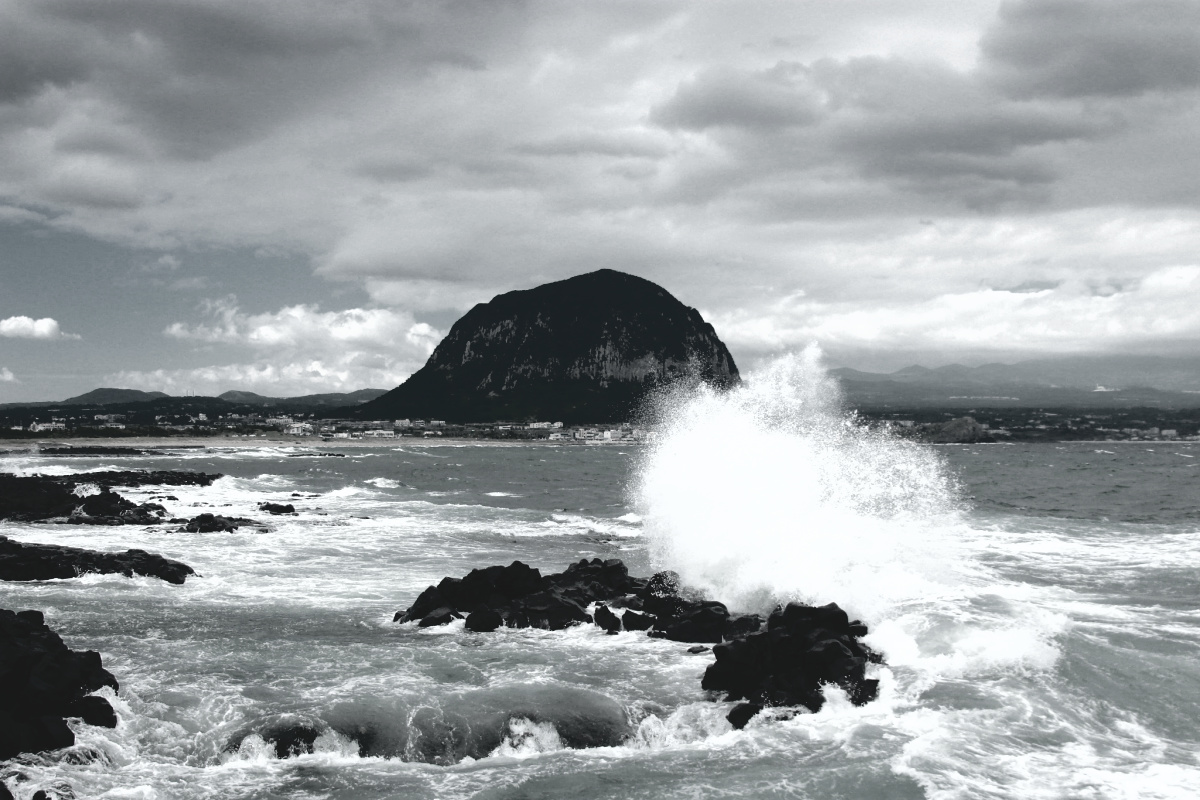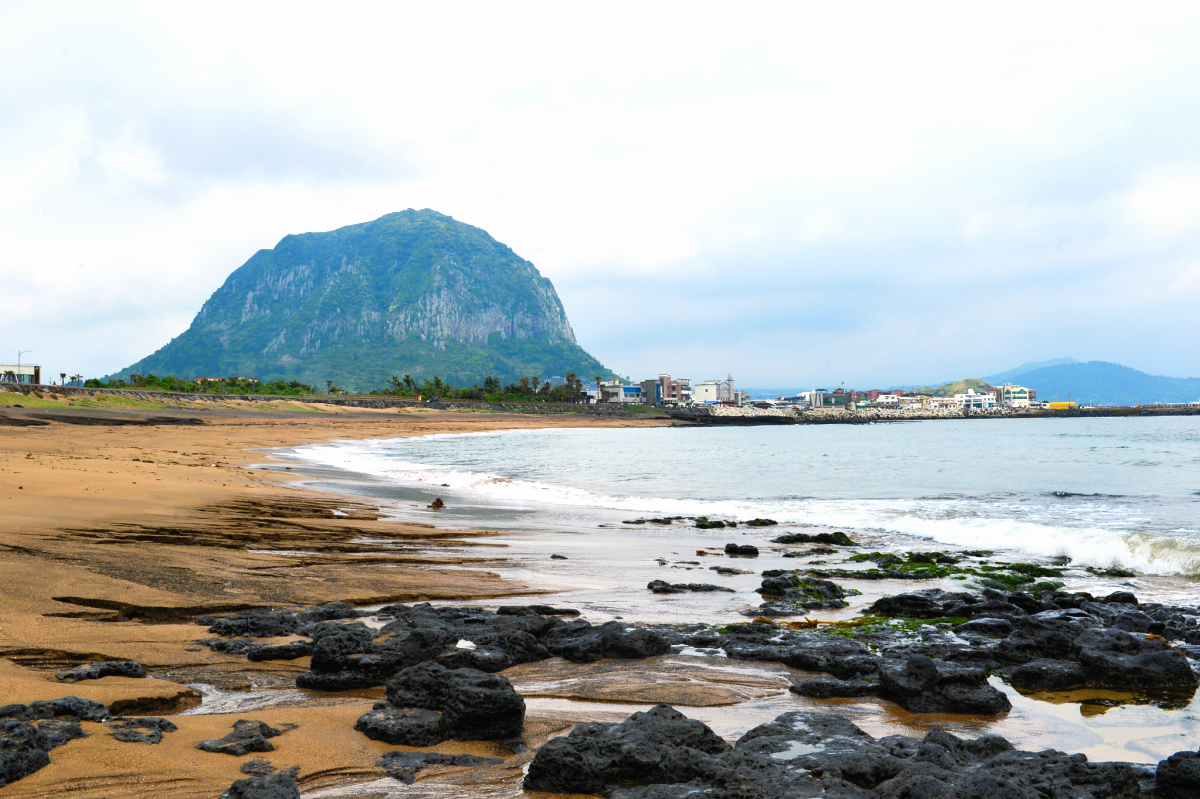Sanbangsan Mountain
 A view of the towering Sanbangsan Mountain taken from the nearby beach area
A view of the towering Sanbangsan Mountain taken from the nearby beach areaSanbangsan Mountain
Sanbangsan Mountain is a famous mountain in Seogwipo City, being visited by thousands of travelers and locals annually.
Besides its beautiful nature, you will surely enjoy the spectacular views of Jeju Island's surrounding sights--blue sea, islands, Hallasan Mountain, valleys, towns, and stretches of beaches.
Sanbangsan Mountain is a lava dome connected to the sedimentary layer of the Yongmeori Coast on the coast of Sagye-ri, Andeok-myeon in Seogwipo.
It is a bell-shaped thalloid (alga or fungus) that stands tall in southwest Jeju Island's plains, allowing it to be seen anywhere in the area. It is encircled by Ilju Road, which connects Moseulpo Port and Hwasun-ri.
Well-maintained stairs are available so that tourists can climb up to Sanbanggulsa Grotto, which stands at the southern face of Namsa-myeon. If you wish to go up to Sanbangsan Mountain's summit, you can use the trail behind Sanbangsan Mountain, which leads to Deoksu-ri, Yonghae-dong.
Due to its relatively tall height and proximity to the coast, Sanbangsan Mountain will often have clouds hanging or swirling around its summit. The edge of each face of the mountain will show wildly diverging climate characteristics.
Such climates make it a vital sanctuary for vegetation, especially as it grants its native plants unique traits due to its volcanic environment.
At the top of the mountain is a dense evergreen forest filled with silver magnolia, Siebold's chinquapin, Yellowish velvety-leaf lit sea, Japanese cinnamon, Sericeous Newlitse, and more.
In particular, rare plants such as Centipede's foot orchid and Glabrous Korean boxwood, which are rock wall plants, grow on the rock face, leading to the mountain being designated and protected as Natural Monument 182-5.
According to research, over 70 families, 180 genera, 200 species, 30 varieties, and one subspecies of vascular plants totaling 255 species make their homes in the Sanbangsan Mountain.
 Canola flowers in bloom at the foreground of Sanbangsan Mountain
Canola flowers in bloom at the foreground of Sanbangsan MountainExperts found three natural habitats for Single-leaf cremastra, Goering's cymbidium, Caudate tick clover, Zanthoxylum coreanum, and Centipede's foot orchid.
Sanbang refers to a cave within a mountain, and Sanbangsan Mountain derives its name from the fact that there is a sea cave located around 150 meters above sea level on its southern face.
Sanbangsan Mountain was born out of a violent volcanic eruption going back from 700,000 to 800,000 years ago. The mountain itself proves that it is, in fact, a massive body of lava.
The cliffs on the southern side of Sanbangsan Mountain features a wide variety of curious formations such as weathering pits and talus scree slopes, some of which are over two hundred meters high.
 Black and white view of the sea in the foreground and B&W Sanbangsan on the background
Black and white view of the sea in the foreground and B&W Sanbangsan on the backgroundThe name 'sanbang' means 'a cave inside a mountain.' This name implies that this mountain contains a cave, which is actually located about 150 meters above sea level. Being in that position certainly offers a spectacular view of the blue ocean and its distant islands.
Due to its proximity to the sea and its high elevation, the peak is often ringed with a white cloud. The mountain's upper slopes have their distinct climatic conditions that offer the best environment for various plant and animal species making their home.
Because of that biological condition and natural value, the government ensures that the area is protected and monitored for botanical research.
The Sanbangsa Cave Temple and the Bomunsa Temple, which safely houses the relics of Buddha, are also located on the mountain of Sanbangsan.
You will find the Sanbanggulsa Grotto as you walk along the stone-steps between the two temples.
 Beach view as the foreground of Sanbangsan Mountain [산방산]
Beach view as the foreground of Sanbangsan Mountain [산방산]Another exciting thing you will find nearby is the signal beacon called 'Yeondae' in Korean stands at the roadside in front of the mountain. This signal beacon was used in the past to fire and smoke to relay urgent messages, such as incoming invaders, typhoons, and other emergencies.
The more popular 'Bongsudae' has almost a similar function with 'Yeondae' as a signal beacon.
However, 'Yeondae' beacons were built around hilly or coastal areas, while 'Bongsudae' beacons were built on mountain tops. During the daytime, smoke was used to send warning signals, while the fire was used at night.
Thanks, and that's all at this point. I hope that's useful.
Enjoy your travels and be safe!
Getting to Sanbangsan Mountain
You can take a bus from Jeju City's Intercity Bus Terminal bus number 251 for Sanbangsan Mountain bus stop.
It takes an hour and a half to get there by bus from Jeju City.
Taxis can also bring you there or to your accommodation. Just make sure you have the right address in Korean language if you don't speak the language.
Thanks, and that's all at this point. I hope that's useful.
Enjoy your travels and be safe!
Get Exciting Activities
Book one of our exciting activities today to experience the thrill of a lifetime! Take advantage of this opportunity and secure your spot in advance.
Hotel Map Guide
Find your affordable, accessible, and comfortable hotel in Seoul at Agoda.Com. See the hotel map below...
Hotel Booking Guide
Find affordable and amazing hotels on Agoda.com using the search box below. Book now to enjoy great discounts and save!




New! Comments
What do you think about this page? Leave me a comment in the box below.